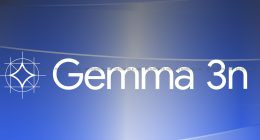In the exhilarating world of cricket, where every match is a spectacle, the clash between India and Pakistan is unparalleled. And if it is during the World Cup, that just increases the stakes and ante to greater levels. Time and time again, matches between these two cricket rivals, wherien rivalry extends way beyond cricket, have drawn the attention of thousands of spectators, and the latest one takes the cake. The ICC Men’s Cricket World Cup 2023 witnessed a historic moment when these two cricketing giants faced off, wherein it set a new global streaming viewership record.
The recent match between India and Pakistan on October 14 garnered an astonishing 3.5 crore (35 million) concurrent viewers on Disney+ Hotstar, Disney’s streaming platform in India. This milestone not only broke records but surpassed the previous global streaming viewership record of 32 million viewers, which occurred during the IPL finale between the Chennai Super Kings and Gujarat Titans in the 16th edition of the Indian Premier League (IPL).
This news also marks a strong comeback for Disney+ Hotstar in the Indian market. Over the last year, the platform witnessed a substantial drop in subscribers, losing nearly 21 million subscribers in just three quarters. This decline saw its paid member base shrink to 40.4 million subscribers for the quarter ending July 1, a marking a steep decline from its peak of 61.3 million subscribers in the quarter ending October 2022.
The key contributing factor to this subscriber decline was the loss of digital streaming rights for the IPL, a significant content offering that initially fuelled the platform’s growth in the country and enabled it to become synonymous with digital cricket in India. Add to it the intense competition from Asia’s richest man, Mukesh Ambani’s JioCinema on content as well as premium pricing, Disney+ Hotstar has been in hot waters for a while now. So much so, that Disney, the platform’s U.S. parent, has been known to explore possible sale of the Hotstar platform, since commercials haven’t worked out for it despite investment in the billions.
As the official streaming partner of the ICC Cricket World Cup, the platform has been a go-to destination for cricket enthusiasts. In a strategic move to attract more viewers, Disney+ Hotstar recently offered free streaming of marquee cricket tournaments, taking a lead out of rival JioCineman, which offered free streaming during IPL. This enticing offer, which includes the Asia Cup and the ongoing ICC Men’s Cricket World Cup, was made available to mobile users in India. The aim was clear: to bring cricket’s excitement to a broader audience.
And from the looks of it, its efforts have borne rich fruit. Last month, the streaming platform recorded a peak viewership of 2.8 crore during the India vs. Pakistan match in the Asia Cup, marking the latest instance of Disney+ Hotstar making waves. Previously, the platform had achieved a record of 25.3 million concurrent viewers, a feat realized during the ICC Cricket World Cup semi-final match between India and New Zealand in 2019. “We would like to thank all the fans who tuned-in to watch the India-Pakistan match on Disney+ Hotstar. Your love for the game is what made it possible for Disney+ Hotstar to break all the previous records across all cricket formats and hit a peak concurrency number of 3.5 crore viewers,” Sajith Sivanandan, Head of Disney+ Hotstar India, said in an official statement.
“While the loss of the IPL cricket rights did save Disney billions of dollars, this Saturday, Disney+ Hotstar has been able to get a much-needed win, as the streaming service reclaimed the global on-demand video streaming record by having 35 million concurrent viewers tuning in live for the World Cup cricket match between India and Pakistan,” the company noted in its statement, adding that Disney had expected higher numbers. “…which apparently had projected that the game could have reached over 50 million concurrent viewers during the tournament and reach 82% of the total annual video users in India during the nearly 50-day series.”





